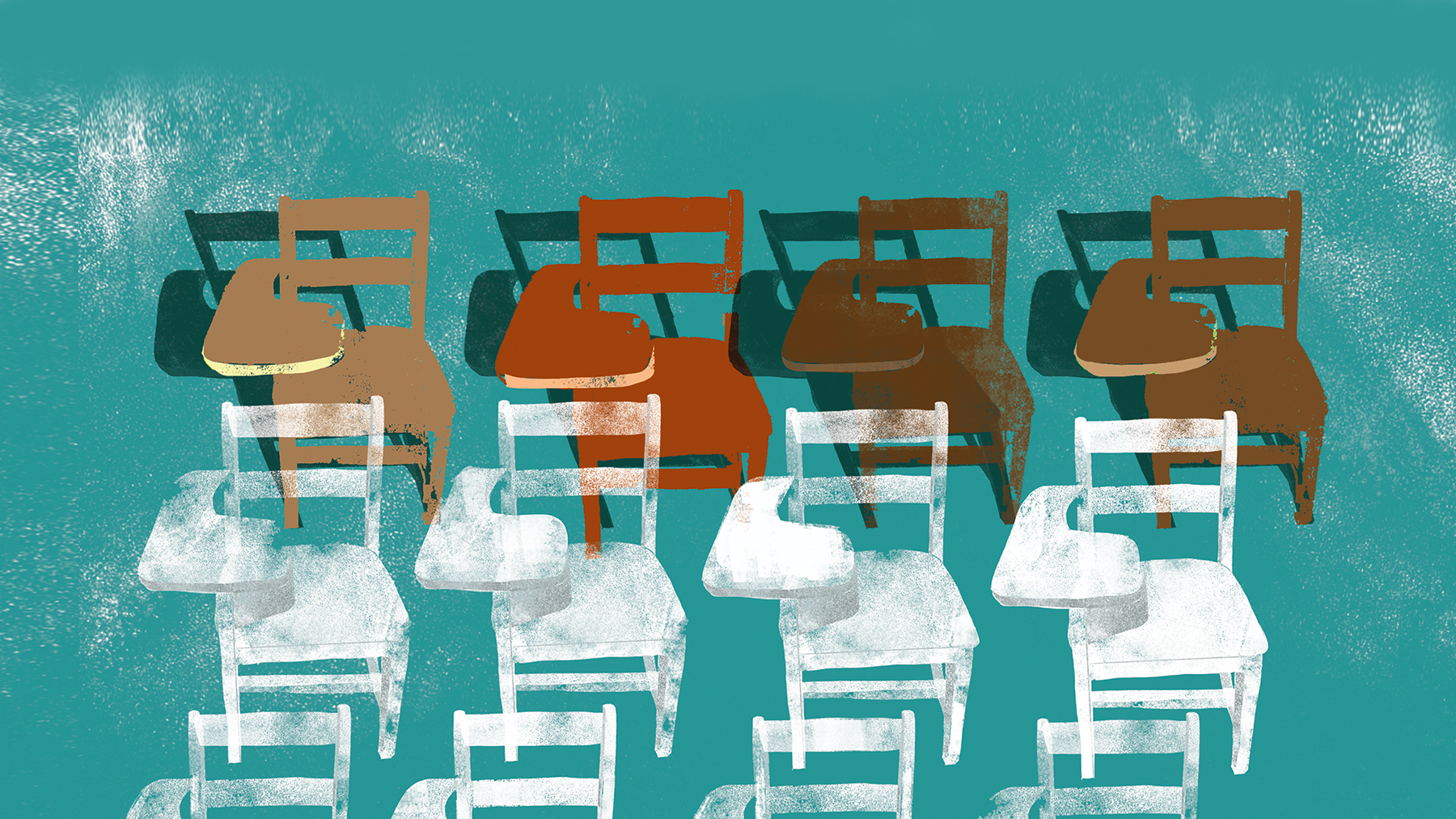Isaiah Elliott was suspended from seventh grade for holding a toy gun in an online art class.
Ka’Mauri Harrison, 9, faced nearly two weeks of suspension for picking up a BB gun in his own bedroom – after his brother had tripped over it.
A 15-year-old girl was incarcerated for not doing her homework, which violated her parole.
All three students have at least three things in common: They were punished for normal childhood behavior, they were in their own homes at the time of their petty offenses, and they are all Black.
As Black students shifted from the classroom to online learning during the COVID-19 pandemic, harsher disciplinary measures that had been carried out against them at school followed them home.
“Zoom suspensions followed similar patterns to in-person classroom management tactics that feed Black students into the school-to-prison pipeline,” Cory Collins, a senior writer for the Southern Poverty Law Center’s Learning for Justice program, points out in his story “It Was Always About Control.” The story is featured in the latest edition of Teaching Tolerance magazine, a publication of Learning for Justice.
Prisons and schools have much in common, says Dr. David Stovall, a professor of Black studies, criminology, law and justice at the University of Illinois at Chicago. Hallway protocols, restrictive bathroom policies, surveillance cameras and metal detectors can be found in both places.
“It’s something a little more insidious” than the school-to-prison pipeline, Stovall says, arguing that students “are reminded based on the discipline and curriculum policies that they’re in a de facto prison in those spaces.”
It’s a particularly acute problem for Black students.
Nationally, Black students are nearly four times as likely to face suspension as white students, according to an analysis of public data by ProPublica. In Wisconsin, they are 7.5 times as likely as white students to face suspension, and roughly six times as likely in Minnesota and Connecticut.
In fact, Black students were overrepresented in every punishment measure that was evaluated in a 2018 analysis by the U.S. Government Accountability Office, regardless of poverty level or type of school.
Whether students are learning at a distance or in person, punitive policies are harming them, Collins writes, citing academic experts and civil rights advocates. Instead, schools across the country should take a systematic approach to undoing structures that rely on compliance and punitive discipline rather than students’ learning and overall well-being.
“It’s a pathway that is sadly well-worn and very visible,” says Miriam Rollin, the director of the Education Civil Rights Alliance, which was convened by the National Center for Youth Law. “Our system is failing kids, and we need to hold that system accountable.”
Dr. Nataki Gregory, CEO of CT3, an organization that provides training focused on relationship building and student engagement with a view to higher achievement, instructs school leaders to consider who benefits from a policy and who is harmed by it.
“Because the truth is there are some of these policies that just make zero sense and have nothing to do with learning,” she says. “It’s really just about compliance or oppression. And if that’s what you’re trying to bring into the school, then you have the wrong focus.”
Collins wrote: “Before a Colorado school suspended Isaiah Elliott for holding a toy gun, they sent a police officer to his home. ‘You put his life in jeopardy,’ his mother said to the school – a school that had followed its systems and policies exactly as designed.”
Editor’s note: The SPLC’s Teaching Tolerance program changed its name to Learning for Justice in February to reflect its evolving work in the struggle for radical change in education and in communities. The rollout of the new name has been taking place over the last several months, as the program makes changes on its website and social media accounts. The name change will also take place gradually in the program’s publications, lessons and other resources. The Spring 2021 issue of Teaching Tolerance magazine is the last one under that name. Starting with the Fall 2021 issue, the magazine will be called Learning for Justice.
Illustration by John Jay Cabuay



